Email use cases
As you build your email campaigns, here are some general guidelines for how to build your content depending on your use cases.
Onboarding
When your users are onboarded, provide helpful tips to get users started and showcase only the most essential features. Try to always send a welcome email after a user signs up. The following is an example from LivingSocial that contains simple calls to action and informs users about a deal:
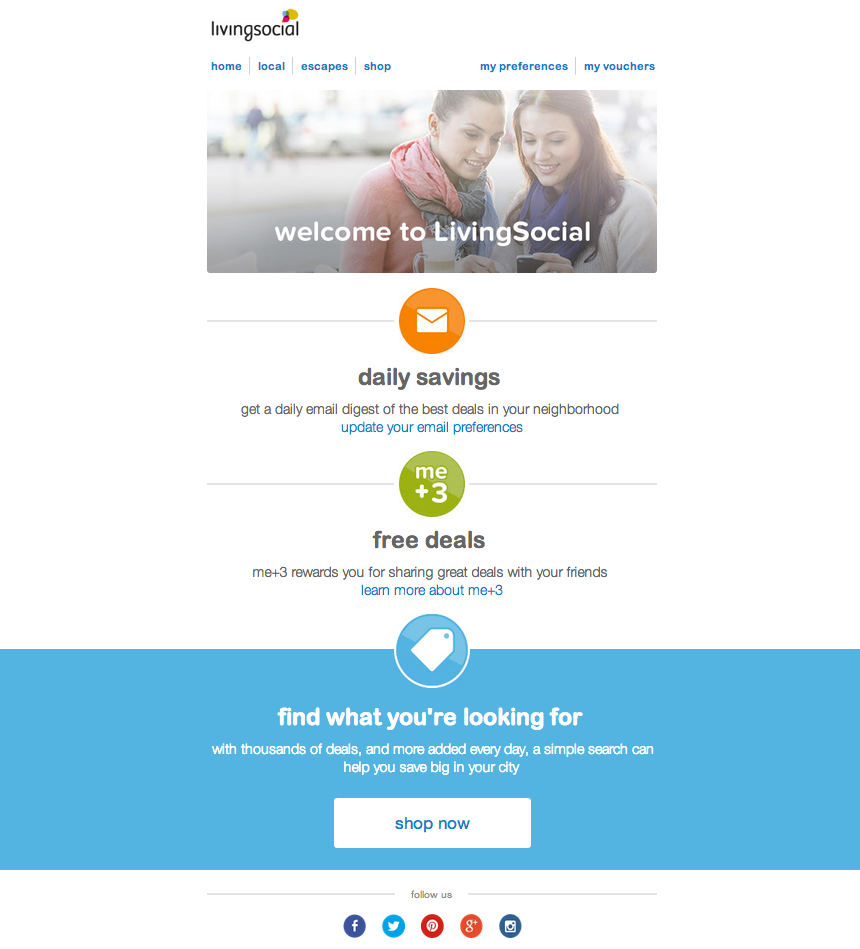
However, too much information can be overwhelming and potentially confusing if the user is still unfamiliar with your app! As you introduce more information about your app, it can be helpful to provide links to your documentation and let users know how they can get support.
Sales and promotional
Your content should communicate the value of a promotion, such as the discounts and sales information and how long the offer lasts. Providing graphics is a great way to illustrate any products you’re promoting. Keep your copy concise and simple so that it doesn’t clutter your email and distract users from the essential content. Make your call to action clear and give recipients an easy way to immediately participate in the promotion.
For recommending certain products, try to present them as curated, personal suggestions that the user may like. If you’re promoting a limited time offer, be sure to let users know! Ideeli does a great job at conveying urgency in this email:
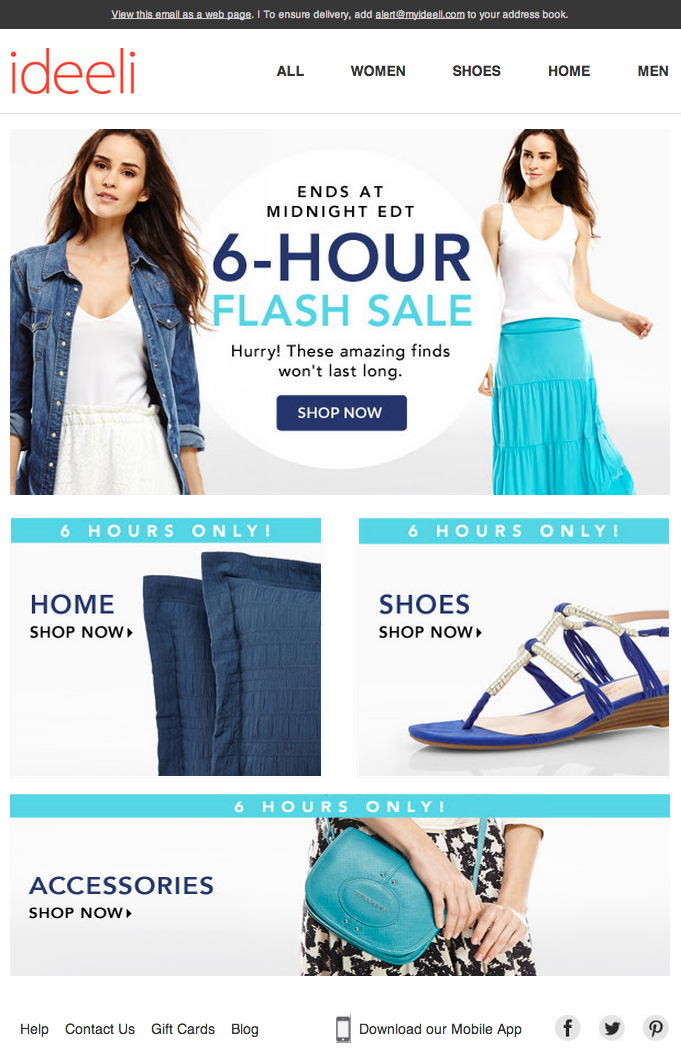
Transactional
After a user makes an in-app purchase, here are some content guidelines for your email campaigns specifically for transactional interactions with your users:
- Thank them and provide any tips that can help them make the most of that purchase
- Provide them with shipping confirmation and a way to ask questions about their shipment
- Ask for feedback to solicit input without being pushy
Because you’ve just provided users with a service, they may be more likely to share their thoughts. Here’s an example of an email from Restaurant.com:
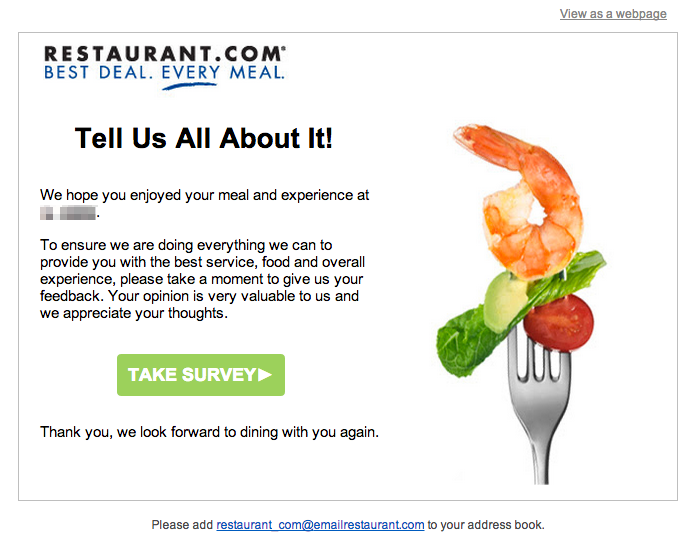
Retention
Keep your tone friendly! This may be your last chance to win users back, so be sure to include content that showcases your app’s value. If the user has been relatively inactive since installing, offer helpful hints for getting started.
- For social apps, keep users updated on their friends’ activities.
- Offer discounts or any other incentives that may bring users back.
Try to make your message personal to show the user that they are still valued. Rue La La, for instance, frames the retention email as a note from its CEO:
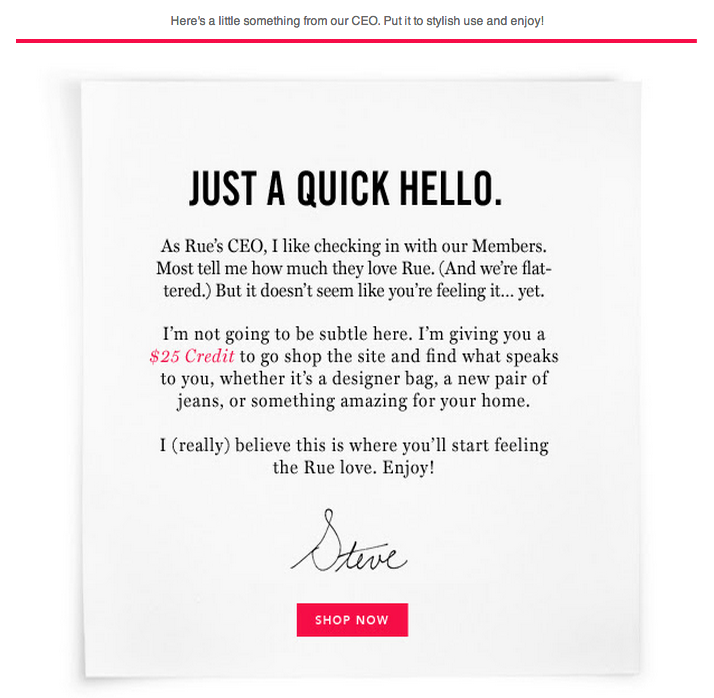
Social
Email can help you build up a social fanbase by directing recipients toward your social media platforms. Include links to your social media accounts within the email to make it easy for users to connect.
Make it fun! Try running a photo contest, promoting a hashtag, or having a giveaway. The following is an email from Hailo that offers a reward for participating in photo challenges:
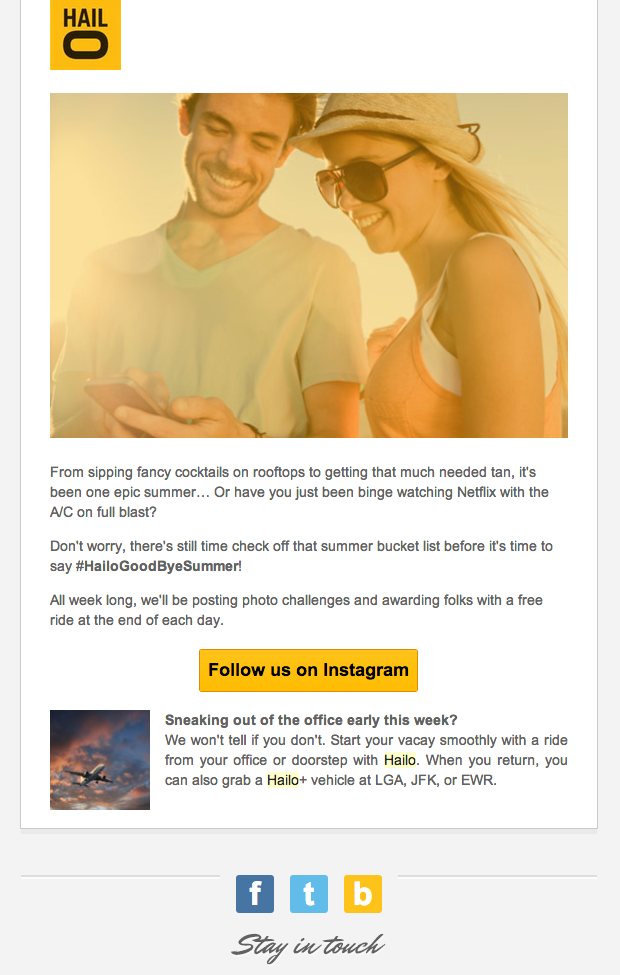
Updates
Send updates of new or improved features to all of your users. Updating users on new features is also a re-engagement tool because it reminds lapsing users of your app’s value.
If your feature requires an explanation or demo, include a link in the message. Here’s an example by Allrecipes.com:
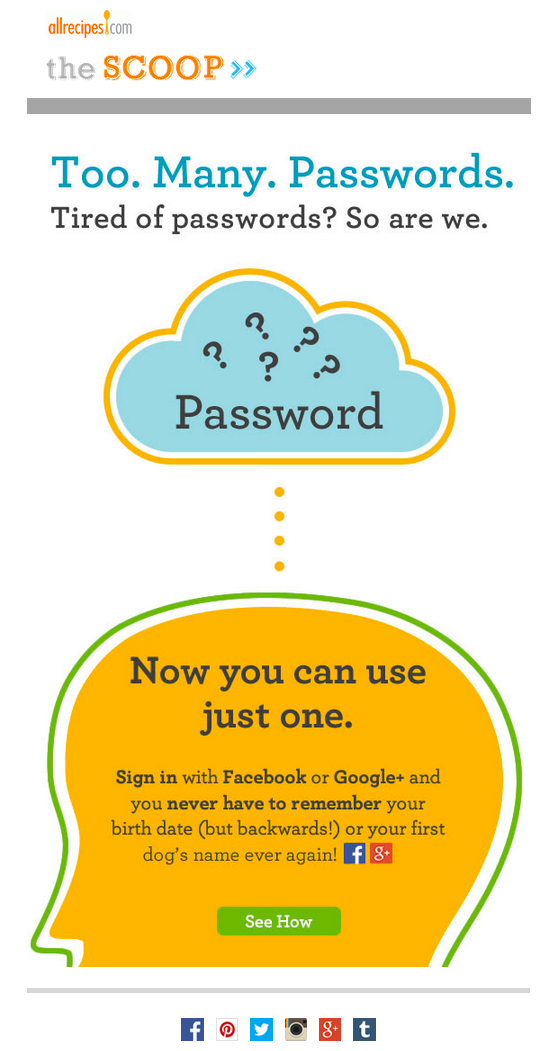
 Edit this page on GitHub
Edit this page on GitHub